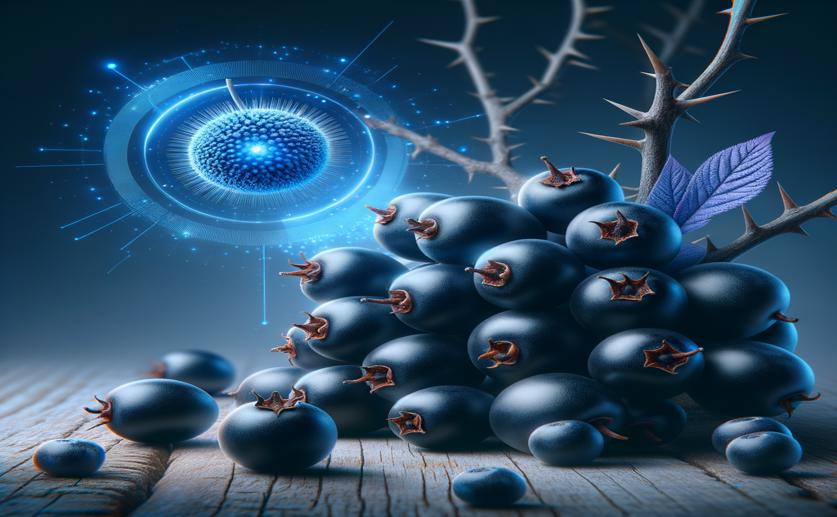
Blackthorn Fruit Extracts and Blue Light to Combat Harmful Bacteria
Jim Crocker
9th September, 2024

Image Source: Natural Science News, 2024
Key Findings
- The study by the University of Warmia and Mazury in Olsztyn found that blackthorn fruit peel (BFP) combined with blue light (BL) can effectively kill Listeria monocytogenes
- BFP contains polyphenols like quercetin and rutin, which are crucial for its antimicrobial activity
- The combination of BFP and BL led to a rapid inactivation of Listeria, causing extensive membrane damage to over 90% of the bacteria
References
Main Study
1) Blackthorn fruit peel polyphenol extracts and photodynamic effect under blue light against Listeria monocytogenes.
Published 7th September, 2024
https://doi.org/10.1016/j.fm.2024.104608
Related Studies
2) Antibacterial plant compounds, extracts and essential oils: An updated review on their effects and putative mechanisms of action.
3) Photodynamic inactivation of Listeria innocua biofilms with food-grade photosensitizers: a curcumin-rich extract of Curcuma longa vs commercial curcumin.
4) Application of the curcumin-mediated photodynamic inactivation for preserving the storage quality of salmon contaminated with L. monocytogenes.



 7th July, 2024 | Jim Crocker
7th July, 2024 | Jim Crocker